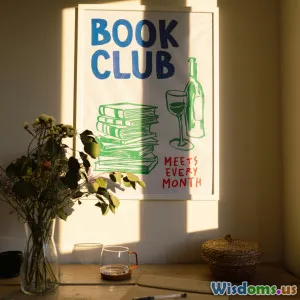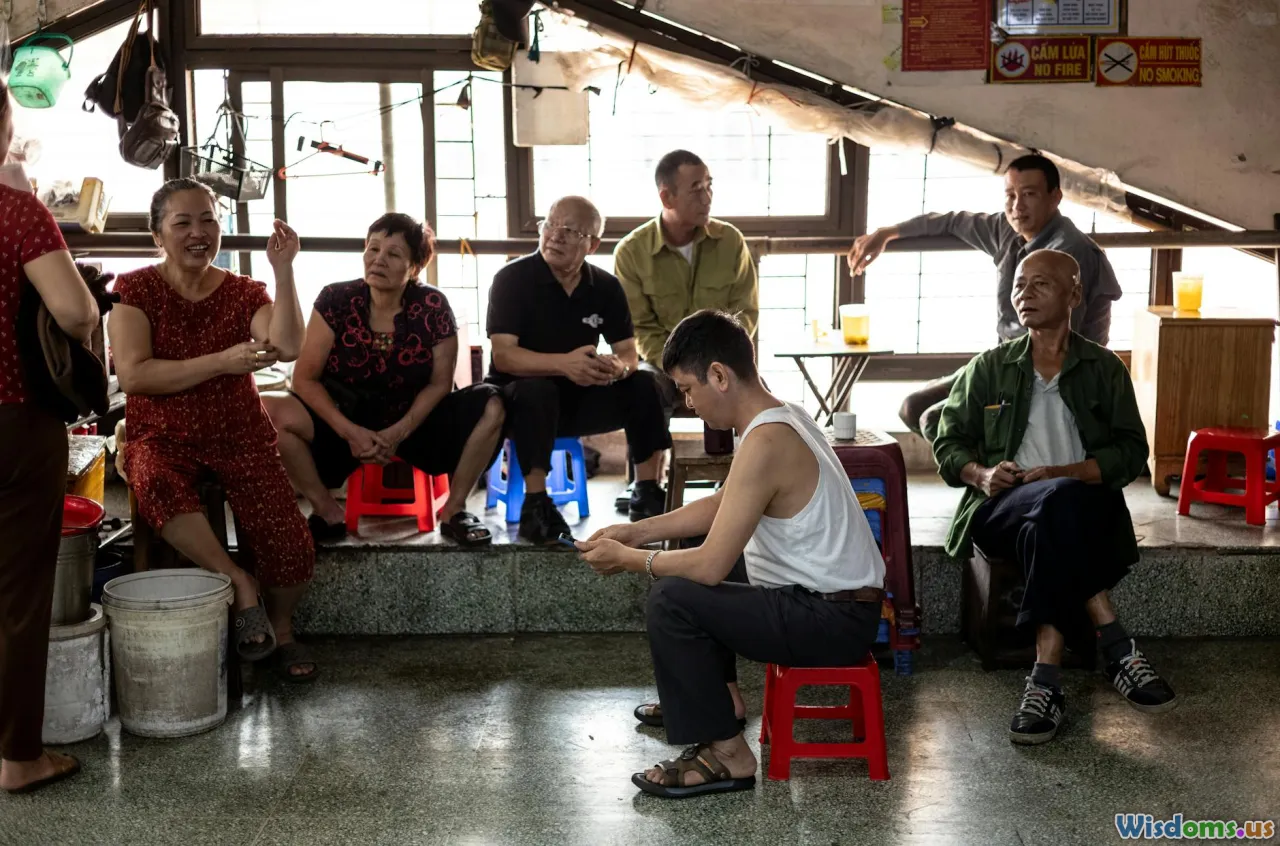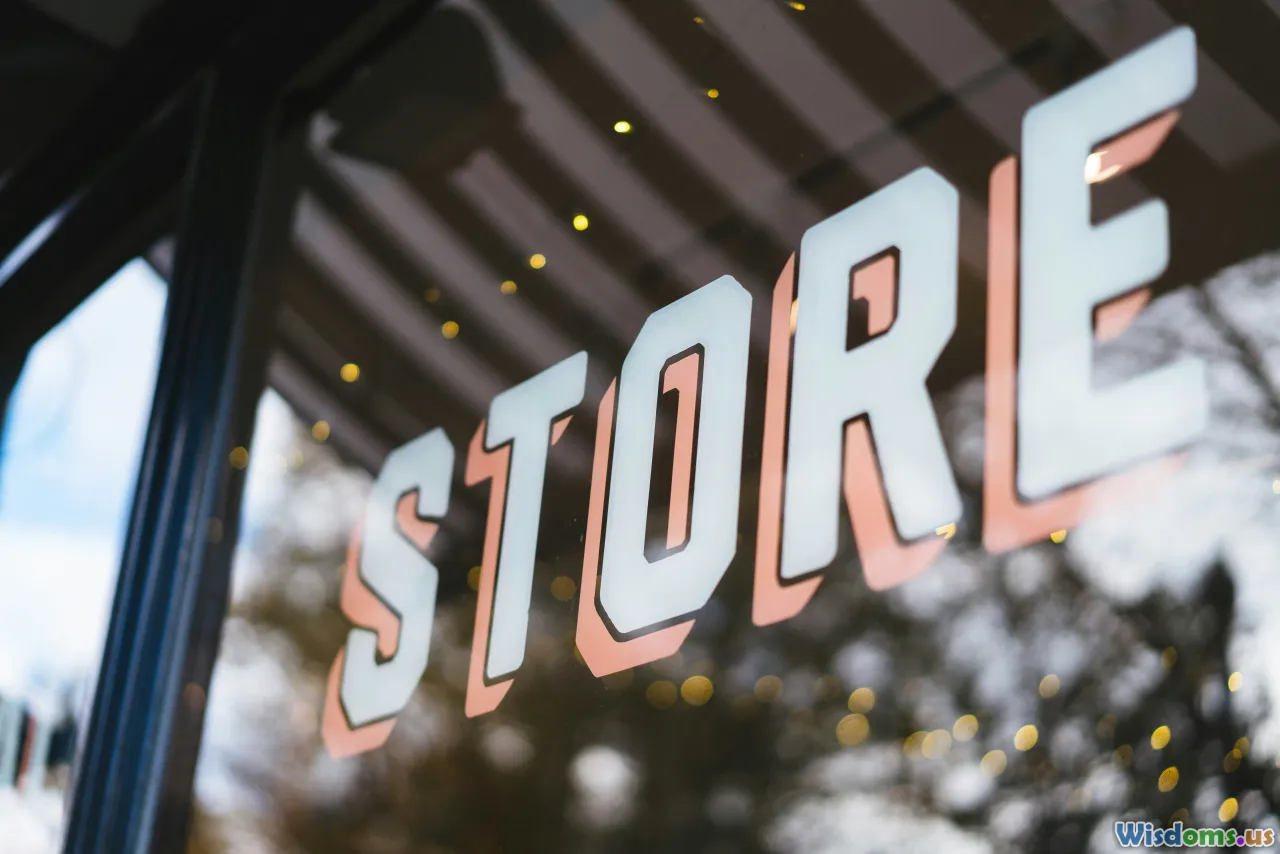
How Book Clubs Shape Local Literary Trends
16 min read Explore how book clubs influence local literary choices, spotlighting trends, authors, and community reading habits. (0 Reviews)
How Book Clubs Shape Local Literary Trends
Books aren’t just an escape—they’re a conversation. Across neighborhoods, cafes, and libraries, book clubs gather to read, discuss, and share ideas, but they’re also wielding far greater influence than many realize. In the age of digital recommendations and viral titles, local book clubs remain a powerful force: they not only spark communal bonds; they quietly shape the stories a community cherishes. Let’s explore how book clubs mold literary culture at a micro scale—one that ripples through local bookstores and sometimes, the world.
The Unsung Architects of Community Reading Lists

Step into any book-loving community and you’ll find book club selections spread across front tables in shops and libraries. Unlike top-down bestseller lists curated by publishers or online reviewers, book club reading lists are organic, shaped by conversation, curiosity, and the tastes of engaged readers. Whether the club meets in person or online, choices fuse global trends with local flavor.
Consider "Books & Beans," a café-based club in Sacramento, California. Each month, members pitch and vote on titles, routinely spotlighting regional authors and overlooked genres. The group’s 2023 picks included local mystery writer K.R. Hardy’s Scorched Poppies—a novel that sold out within days in nearby independent bookstores. Capital Reads in London, by contrast, has had a ripple effect by revisiting contemporary African literature, causing area shops to boost their offerings from authors such as Chimamanda Ngozi Adichie and Teju Cole.
These grassroots reading lists end up guiding purchasing decisions—not just for members but for their wider circles. Local booksellers, noticing patterns in customer requests, are quick to adapt their stock to favored club picks. Over time, these choices granulate into distinctive “hot” titles within local regions, creating minor literary phenomena that national sales charts might overlook.
Fostering Hidden Gems and Diverse Voices

Perhaps one of the most enduring impacts of book clubs is their role as champions of hidden gems. While algorithm-driven discovery often boosts already-popular books, club members actively seek diversity, novelty, and personal resonance. The collective nature of book club decision-making gives a platform to marginalized voices and small-press publications.
For example, during a 2022 survey conducted by the American Booksellers Association, indie bookstore staffers cited book clubs as a major driver for sales of less-known novels and debut works, especially from minority authors. Clubs such as "Lit & Local" in Asheville, North Carolina reportedly launched the regional career of Cherelle Thompson, an independent poet whose chapbook gained traction after an enthusiastic discussion.
Actionable insight for club organizers: Diversify your source lists. Pair blockbusters with titles from micro-presses or indie publishers—look for books featured by organizations like The Book Club Hub or independent literary journals. Rotate curators, inviting members to introduce titles from their own cultural or literary backgrounds. This not only shapes broader literary awareness but ensures that reading habits reflect the tapestry of the community itself.
Book Clubs as Trendsetters—Local to Global

While word-of-mouth has always sold books, the structural influence of book clubs is now measurable. Hard evidence for this can be seen when a specific title goes viral within a local club scene and then earns rapid shelf prominence. In Toronto, "East End Authors Alliance," a network of downtown book clubs, independently selected Nita Prose’s The Maid months before its international breakout—the buzz started locall, soon extending nationally as indie bookshops devoted endcap displays. Author events, public readings, and related programming further boosted momentum.
There are now documented cases when a regional book club focus has reignited national attention for backlist classics. In Canberra, Australia, periodic club choices to revisit the works of Aboriginal authors have influenced not only library acquisitions but municipal book festival line-ups.
What’s notable is the blend of informality and organization: clubs are unconsciously creating trial markets and micro-trends that publishing professionals closely monitor. For publishers and publicists, joining local club reading sessions or paying attention to regional club forums is a valuable litmus test for upcoming releases.
Building Dialogues Across Demographics

Unlike tightly targeted online recommendation feeds, local book clubs comprise varied perspectives—spanning ages, backgrounds, and life experiences. These conversations foster literary empathy and often encourage members to step outside their comfort zones.
Consider the "Across The Ages" project in Milwaukee, which actively partners high schoolers with retirees, purposely mixing classic lit with contemporary young adult fiction. This intergenerational conversation sparked not only library exhibition tie-ins but evolved the kinds of books borrowed: classics like Lorraine Hansberry’s A Raisin in the Sun experienced a revival alongside hard-hitting new releases like Angie Thomas’s The Hate U Give.
For neighborhoods looking to knit closer connections, starting a multi-demographic book club has proven benefits:
- Recruit facilitators from varied age brackets to foster inclusive selection processes.
- Alternate genres and target diverse themes to sustain broad interest and challenging dialogue.
- Partner with local schools or senior centers for expanded reach.
The result is a living, breathing literary culture that can dismantle generational divides and compel readers to engage with unfamiliar worlds—one meeting at a time.
Reimagining Local Bookstores Through Club Partnerships

Independent bookstores—often the first to notice emerging club-driven trends—are responding with creative programming and exclusive offerings. Far from merely being suppliers, these shops become community hubs by collaborating directly with clubs.
"Page & Palette" in Fairhope, Alabama, now lists a roster of in-store club meetings, offers exclusive discounts on club picks, and hosts author Skype-ins for book discussions. By tracking what their book club partners are reading, they adjust ordering policies, sometimes taking calculated risks on lesser-known authors. As a result, both inventory turnover and foot traffic have improved.
Moreover, this model is inspiring libraries too. Toronto Public Library hosts quarterly "Club You Choose" nights where local groups share their reading journeys, recommend lesser-known books, and even swap titles. This cross-pollination generates buzz across different branches and is a prime example of how club enthusiasm can reshape what’s stocked, which titles get promoted, or even what gets adapted into town-wide reading programs.
Bookstore-club symbiosis is productive for authors as well. In cities like Portland, coordinated book club themes drive collective pre-orders, motivating publishers to schedule bonus author Q&A sessions. In turn, this strengthens the local book ecosystem and ensures a steady pipeline of new, conversation-worthy literature at ground level.
Tips for Starting a Book Club That Influences Local Tastes

If you’re inspired to launch your own club with an eye on cultivating local trends, here are actionable tips gleaned from successful case studies:
- Curate Intentionally: Seek a balance between anticipated hits and current under-the-radar gems. Leverage tools like your community’s library requests dashboard or bookshop sales charts.
- Rotate Leadership: Instead of a set facilitator, rotate the role of book selector and discussion leader each meeting. This spreads ownership and surfaces varied literary interests.
- Invite Guest Voices: Consider inviting local authors, librarians, or bookstore owners for Q&A sessions—it boosts your club’s profile and brings in professional insights that can snowball local interest.
- Partner with Local Businesses: Collaborate with cafes, theaters, or galleries for meeting spaces and themed events. This fosters shared promotion—it’s not just about book-buying, but building broader cultural habits.
- Promote Reading Diversity: Use resources from organizations dedicated to literary inclusivity, such as We Need Diverse Books or PEN America, to inject new perspectives into selections.
- Track Impact: Maintain a record of what your club is reading and note local availability, bookseller stock, or library holds—share this data with interested community partners.
A well-run club becomes more than a circle of friends—it is a tastemaker, nudging local readers to discover what might otherwise be overlooked.
Digital Book Clubs: Amplifying or Diluting Local Identity?

The move to digital in recent years, particularly during the COVID-19 pandemic, has dramatically scaled the scope of book clubs. Virtual gatherings—on platforms like Zoom or through Goodreads groups—enable trans-regional participation. This has two primary impacts on local literary trends.
On one hand, digital clubs can spotlight marginalized voices and introduce local members to global selections more swiftly than ever before. A 2021 Pew Research Center report found hybrid book clubs were 37% more likely to try experimental or international works compared to strictly local, in-person groups.
On the other hand, some worry that heavy reliance on digitally driven book clubs and recommendations may erode regional quirks—undermining hyperlocal author spotlights or historic neighborhood traditions tied to certain genres or presses.
One solution: hybrid meeting styles. For example, “Lowcountry Lit Circle” in Charleston holds alternating in-person and virtual meetings. In-person sessions focus on South Carolina-based writers, while online nights feature national and international authors. This technique preserves a local root while inviting global fruit, ensuring the club shapes its immediate scene while remaining open to world currents.
Measuring Club-Driven Impact: From Bestseller Stats to Cultural Moments

Can the sway of local book clubs be quantified? Research suggests yes—even if the impact is sometimes subtle.
Analyses by the Nielsen BookScan in the UK show local club endorsements consistently correlate with month-to-month spikes in sales for chosen titles, often outperforming passive online marketing campaigns in those regions. South Florida’s "Mystery Mondays" club, for instance, credits their pick of Isabella Maldonado’s The Cipher with a threefold spike in Miami-dade bookstore sales prior to its Amazon breakout.
But beyond raw numbers, other cultural indicators are even more telling:
- Bookstores that facilitate frequent club events notice higher event attendance and increased special orders for related titles.
- Libraries annotate records of "in-demand" books after local club discussions lead to waitlists.
- Author appearances and literary festivals increasingly use club selection data as a guide for workshops or panels.
Case in point: In 2022, Seattle’s citywide “One Book, One City” selection process was audited for club participation feedback, leading to an edgier, more contemporary choice than previous years. The effect? More active civic conversation and wider library engagement.
Publishing professionals and cultural organizers, take note: Tap into local club conversations to better pitch, program, and promote literature that truly resonates on the ground.
Cementing a Community’s Literary Identity

Ultimately, book clubs do far more than sway book sales or briefly elevate a single title—they cement a region’s literary identity. Through their choices, conversations, and deliberate community building, book clubs often set the agenda for local reading tastes, bridging neighbors and generations.
From spontaneous meet-ups at a small-town café to online discussions crossing continents, the club’s impact is a guidepost for authors, bookstores, librarians, and readers alike. By amplifying lesser-known works, diversifying voices, and fueling the traditions of shared reading, book clubs remind us: the next literary wave often begins not on a viral TikTok, but around a local table, surrounded by stories waiting to unfold.
Rate the Post
User Reviews
Popular Posts




















